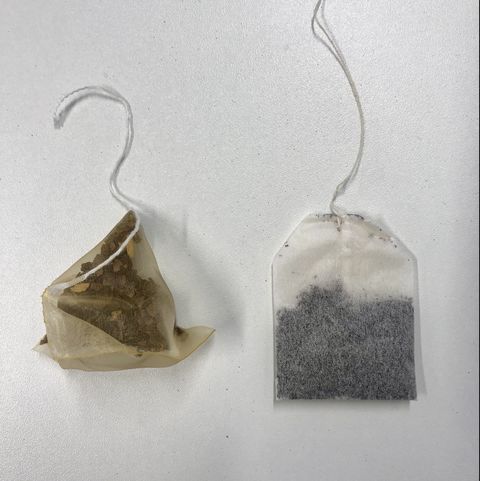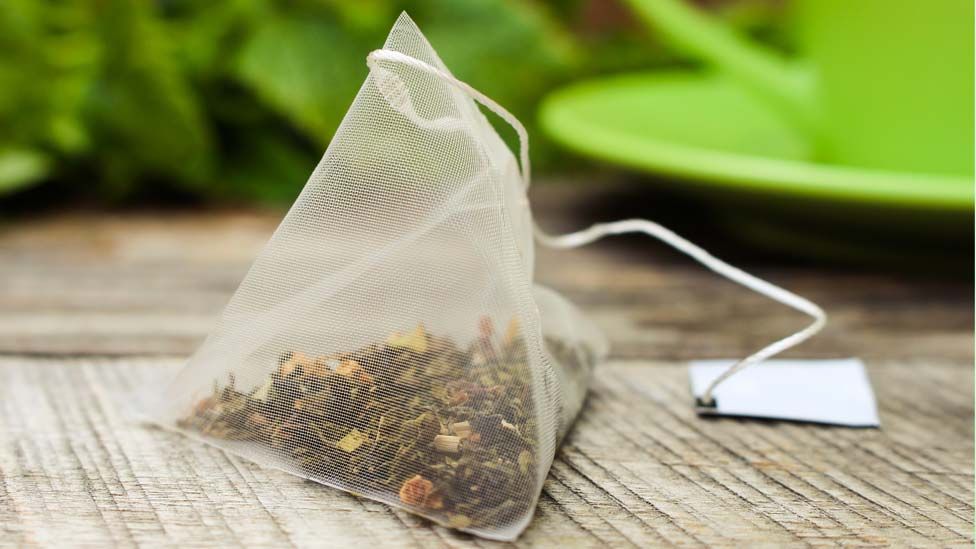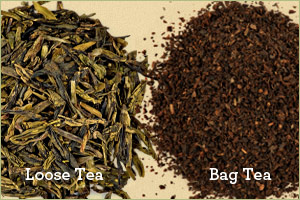
Let’s be honest, Teabags are easy, right? Boil water, pop them in, take them out and tea is done.
But, did you know that several tea bag brands use polypropylene, a sealing plastic, to keep their tea bags from falling apart. This plastic is not recyclable or biodegradable so even when you put all your used tea bags in the food waste or compost bin, it can lead to plastic pollution, as not all of it will be broken down?
That’s not even the only thing I personally don’t like. A research from McGill University in Canada showed that some types of tea bags leak plastic particles (millions actually) in our favorite drink, not from the sealing plastic but from the bag itself.
The scientists found that one plastic tea bag releases around 11.6 billion microplastics and 3.1 billion smaller nanoplastic particles into the cup. Those, in turn, end up in the drinker’s digestive system. The findings were published in the Journal of Environmental Science & Technology and were linked to tea bags that were made out of plastic material, not the paper bags that are more common. These plastic tea bags are more often linked to the higher end brands

Now, to be fare I will say that some brands are going into the right direction and starting using plastic free Tea bags but too many, most of them big names, are very ambiguous about their approach. Some sustain that they are using only tea bags that are free of plastic, tied together with organic cotton and are fully compostable (Pukka Herbs).
Twinings representatives are saying 99% of their range is now either loose leaf or made from a plant/cellulose derived material, excluding Organic Pure Camomile, Organic Pure Peppermint & Organic Fairtrade English Breakfast.
For this last three organic blends Twinings specified in summer 2022 that they are i the process of sourcing a certified, non GM biodegradable plant-based tea paper and are looking to move these blends to the new material as soon as possible.
I am not one to point fingers but it is 2022, with the knowledge and technology this should have been sorted a while back.
A recent study showed what brands of tea did not contain plastic in 2022:
- PG Tips
- Teapigs
- Clipper
- Abel & Cole own brand
- Twinings pyramid range
- Waitrose Duchy range
- Sainsbury’s own brand tea bags
- Co-Op own brand 99
- Brew Tea
- Bird & Blend Tea
- Aldi Specially Selected Infusion tea bags
- Lidl pyramid tea bags
It’s important to note that, while plastic-free, many of the large-name eco-friendly tea bags are still not suitable for home composting. Due to the manufacturing method and plastic alternative used, most still require industrial composting.
If you are set in looking for a tea bag to add to your composting pile the brands I found suitable are unfortunately only:
- Hampstead Tea
- Neal’s Yard
- Pukka Herbs
- Whole leaf: Whole leaf is the highest grade of tea, made up of whole, dried tea leaves. Tea made with whole leaf tea has the highest, strongest flavor profile, which will last through multiple steeps.
- Broken leaf: Broken leaves are typically darker and have been crushed, but maintain plenty of the flavor of full-leaf tea. Broken-leaf tea will maintain its flavor after multiple steepings. This grade of tea is often sold as loose-leaf teas.
- Fannings: Fannings are fragments of leaves collected during the crushing process and are considered of lesser quality than whole or broken tea leaves. The tea in tea bags is primarily made up of fannings, and much of this tea does not retain its flavor after more than one steep.
- Dust: The lowest grading of tea, dust is also collected from the crushing process of broken leaves, leaving only tiny tea particles which make a dust. Tea bags often have tea dust inside their sachets and usually, they don’t retain their flavor for multiple steepings.

If you want to have a bit of fun open some tea bags up with the kids, my ones had fun…me on the other hand…seeing the mess they made not so much but they ended up cleaning so… all good
Well, looking at it, you will already understand where I am going.